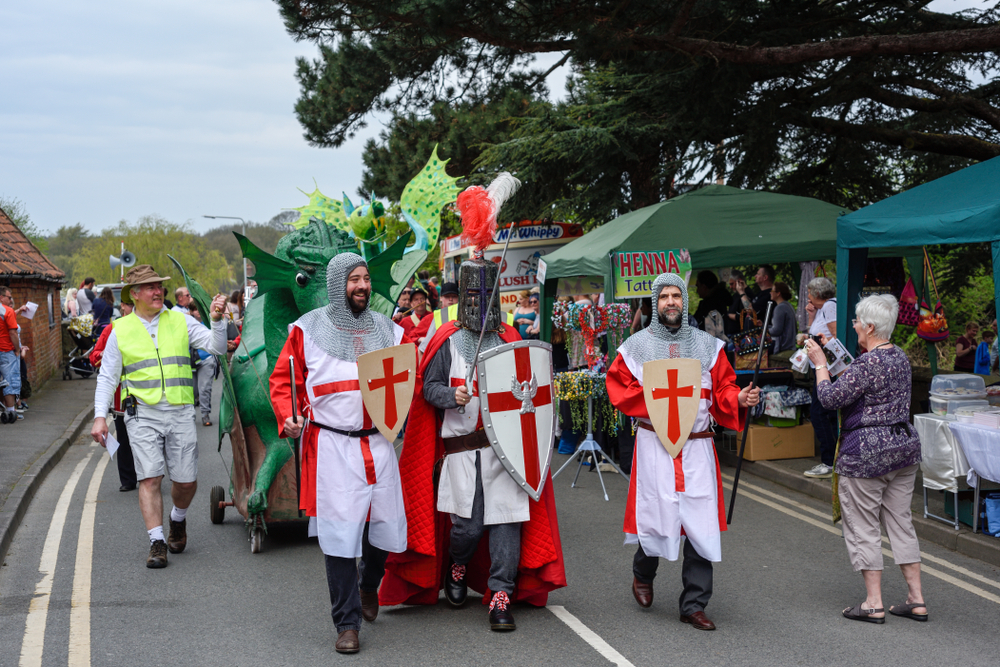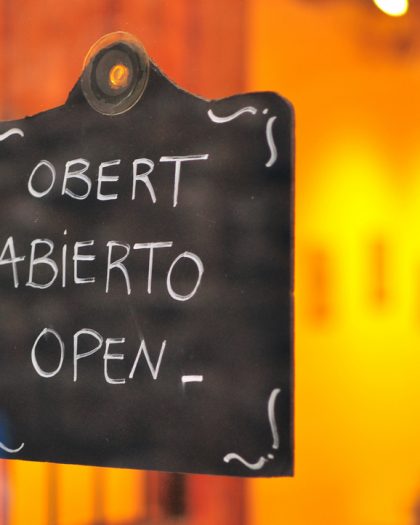
[vc_row][vc_column][vc_column_text]Saint George, the brave and famous dragon-slaying patron of a whopping eleven European countries and countless regions, towns and islands around the world is given a little break from his busy schedule once a year down in Catalonia. Here, his name is Sant Jordi and his holiday is on the 23rd of April. In England he is the protector of the royal family, the symbol of patriotism and has even been evoked as the inspiration for conscription before the First World War. His holy cross forms the central motif of the Union Jack, the national flag of the United Kingdom. In Catalonia la Senyera, its national flag is said to be a representation of the brave and ruthless fight where Sant Jordi has slayed a dragon. It is believed the stripes of red symbolise blood. As one of the oldest flags in Europe, la Senyera has gained a lot of significance through the centuries. La Senyera is a pattern which constitutes a prominent part of the Catalan independence flag, called La Estelada. The separatist sentiment attached to this banner is so profound the flag was banned during the football tournament of La Copa del Rey in May 2016 in fear of political unrest! Although the flag carries with it the memory of Sant Jordi who stood for chivalry, fearlessness and bravery, in Catalonia, his death day of 23 rd of April is surprisingly all about…red roses and books!Since as far back as the fifteenth century Sant Jordi’s day has been celebrated as Lovers’ Day or El Día dels Enamorats. [/vc_column_text][vc_empty_space height=”32″][mkdf_blockquote text=”And whoever said they were sooo over Valentine’s day…. should really try it here in Catalonia”][vc_empty_space height=”18″] It has been customary for centuries to give your beloved a blood red rose as a symbol of commitment and passion. So where do the books come in? It all started with one man who interestingly was not even Catalan. Vicente Clavel Andrés, writer, publisher and editor from Valencia who lived in Barcelona, had it that culture should be promoted by means of literature and that all should have easy access to books. The noble founder of the Cervantes Institute in Barcelona and a great aficionado of Miguel de Cervantes Saavedra’ an saint Sant Jordi died on the same day and he was of course aware that the 23 rd of April was already Lovers’ Day. And so, in the 1920s Vincente Clavel decided to do the unthinkable and invite people to celebrate all of the above at the same time. And it worked. With support from writers and publishers, in 1926, El Día del Libro or The Day of the Book was officially established. Women played a big part in making this fiesta popular, as they gave books to their husbands and fathers… in exchange for the traditional blood red roses they got for El Día dels Enamorats! Today, the crowds on Las Ramblas on El día de Sant Jordi attest to the popularity of this complex and fascinating tradition. Writers and publishers rush around to give autographs, couples in love pick the most beautiful roses and bookworms sift through piles of text as the busy saint watches over everyone. And whoever said they were sooo over Valentine’s day…should really try Saint George’s day with a Catalan twist.[vc_column_text].[/vc_column_text][vc_empty_space height=”17″][/vc_column][/vc_row]







